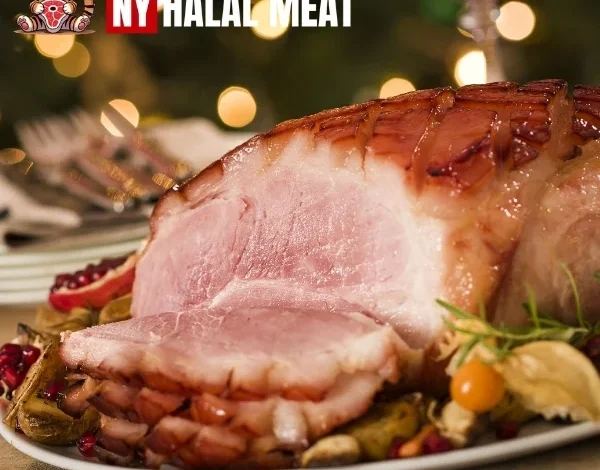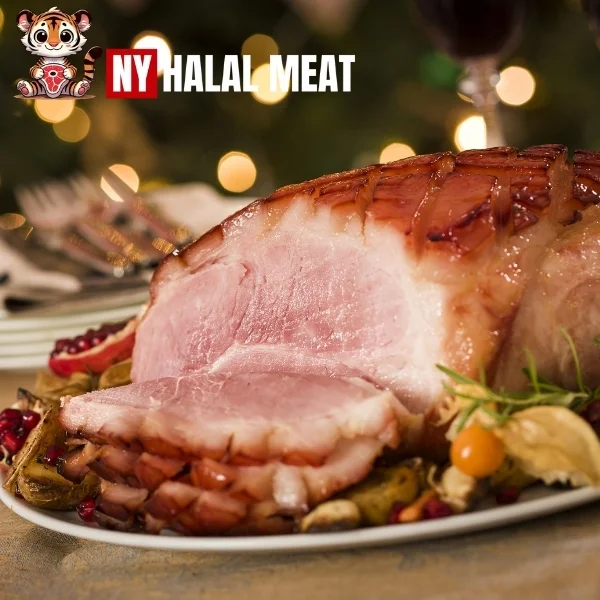
Christmas Ham Traditions Across the U.S.
The History of Christmas Ham
Ham has long been associated with holiday meals, and its history goes back centuries. The tradition of serving ham at Christmas likely started in Europe, where it was a common meat for midwinter feasts. In the U.S., ham became a popular choice for Christmas dinner in the 19th century as refrigeration made it easier to store large cuts of meat. Over time, ham replaced other meats like beef or mutton as the preferred festive dish. Today, it is enjoyed in homes across the country as a symbol of celebration and abundance.
Regional Christmas Ham Traditions
Though ham is a common Christmas dish nationwide, different regions of the United States have their own unique ways of preparing and enjoying it. Let’s take a look at some of these regional traditions and how they influence the flavor and presentation of Christmas ham.
1. Southern Christmas Ham
In the South, ham is a centerpiece of the holiday meal, often served with classic Southern sides like collard greens, cornbread, and sweet potatoes. The Southern style of preparing Christmas ham typically involves glazing it with brown sugar, honey, or a combination of mustard and molasses, which creates a rich and slightly sweet flavor. Slow-roasting the ham ensures a tender and juicy result, with a delicious caramelized crust. This tradition emphasizes hearty, flavorful dishes that bring families together around the table.
2. Midwestern Christmas Ham
The Midwest embraces ham as part of a comforting holiday meal. In this region, the ham is often prepared with savory glazes that combine Dijon mustard, maple syrup, and cloves for a sweet and tangy flavor. Midwestern families love to pair their ham with sides like mashed potatoes, green beans, and cranberry sauce. A defining characteristic of Midwestern ham is its versatility—leftovers often make their way into sandwiches for a delicious meal after Christmas.
3. Northeastern Christmas Ham
In the Northeastern U.S., especially in states like New York and New Jersey, Christmas ham is often served with roasted vegetables and other hearty sides. The glaze used in the Northeast is typically a combination of brown sugar, mustard, and pineapple, which adds both sweetness and a touch of acidity to the meat. This region’s ham tradition is often tied to family heritage, with recipes passed down through generations. Ham in the Northeast is a comforting and familiar dish that brings a taste of tradition to the holiday table.
4. Western U.S. Christmas Ham
On the West Coast, Christmas ham often takes on a more modern twist, with a focus on fresh, local ingredients. West Coast families often use citrus-based glazes, such as orange or lemon, to create a refreshing and vibrant flavor. The ham is sometimes cooked on the grill or smoked to add a unique smoky depth. Additionally, West Coast Christmas dinners may feature fusion dishes that combine traditional flavors with influences from other cuisines, offering a creative and diverse holiday feast.
How to Prepare a Traditional Christmas Ham
While each region has its own style of preparing Christmas ham, there are some essential steps that can help ensure your ham is a showstopper at the holiday table. Here’s a simple guide to preparing a classic Christmas ham:
- Choose the Right Ham: There are different types of ham, including bone-in and boneless, spiral-cut and whole. Bone-in hams tend to have more flavor, while spiral-cut hams are easy to carve and serve.
- Prepare the Glaze: Glazes are what make Christmas ham so special. Common ingredients for a glaze include brown sugar, honey, maple syrup, mustard, and spices like cloves. Some people also add fruit juices like orange or apple cider vinegar to balance the sweetness with a bit of tang.
- Score the Ham: If you’re using a whole ham, scoring the surface in a diamond pattern helps the glaze penetrate the meat, creating a beautiful caramelized crust while ensuring the ham stays moist inside.
- Bake the Ham: Preheat the oven to about 325°F (165°C). Place the ham on a rack in a roasting pan and baste it with the glaze every 20 minutes. Depending on the size of the ham, it will take about 1.5 to 2 hours to cook.
- Let It Rest: After the ham reaches an internal temperature of 140°F (60°C), remove it from the oven and let it rest for 10-15 minutes before carving. This allows the juices to redistribute, keeping the ham moist and flavorful.
Why Is Christmas Ham So Special?

Christmas ham holds a special place in many households, not only because of its delicious flavor but also due to the memories and traditions associated with it. For many families, preparing and sharing Christmas ham is a ritual that brings loved ones together. Whether it’s a recipe passed down through generations or a modern version with a unique glaze, ham is a dish that symbolizes warmth, togetherness, and celebration. It is also a practical choice for feeding large groups, making it an ideal centerpiece for holiday gatherings.
Conclusion
Christmas ham is a beloved tradition across the United States, and each region adds its own flair to this festive dish. From the rich, sweet glazes of the South to the savory, smoky flavors of the Midwest, Christmas ham is a meal that brings families together, no matter where they are. The history of this dish, combined with its versatility and the joy it brings to the table, makes it an enduring symbol of the holiday season. So, whether you’re preparing a classic glazed ham or experimenting with new flavors, Christmas ham is sure to be a highlight of your holiday meal.
